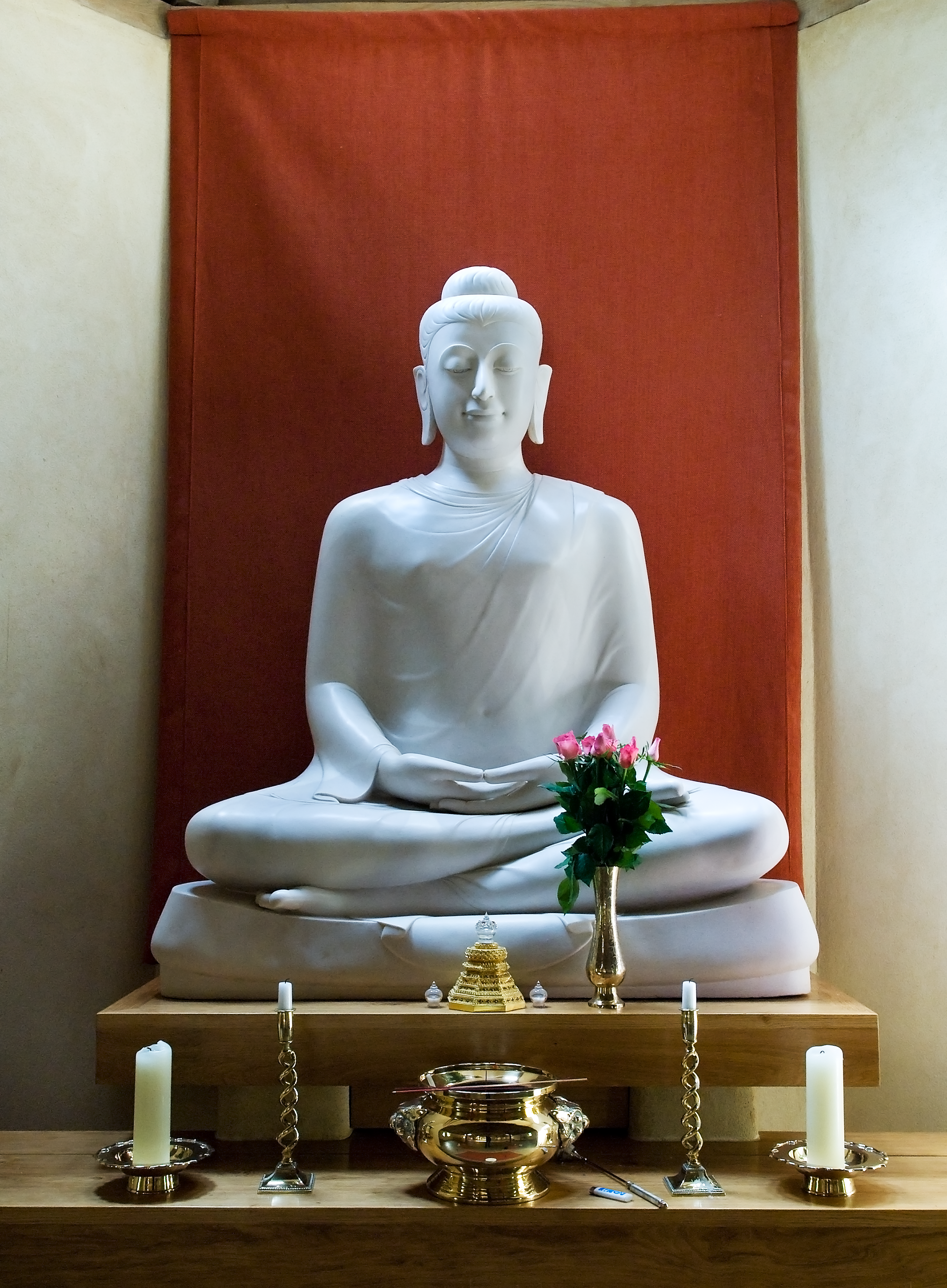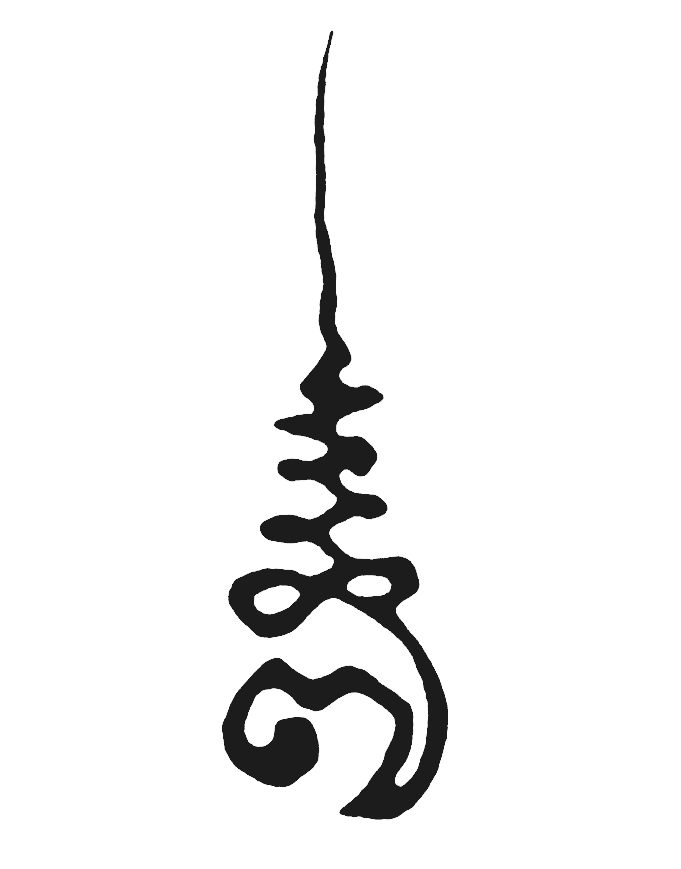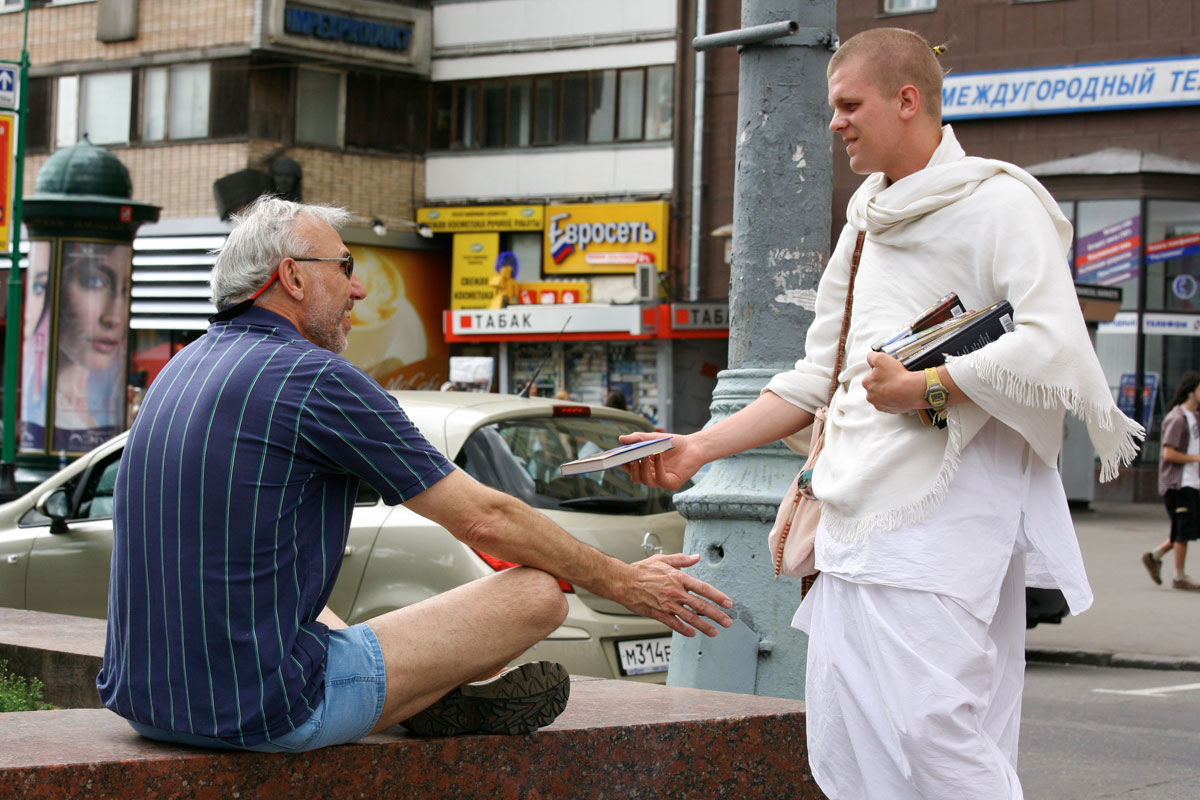|
Buddhism In England
Buddhism in England has growing support. 238,626 people in England declared themselves to be Buddhist at the 2011 Census and 34% of them lived in London. History Early Buddhist presence could be seen in the 1810s. Adam Sri Munni Ratna, a Buddhist monk from Ceylon (Sri Lanka), travelled to England with his cousin (also a Buddhist monk) while accompanying Sir Alexander Johnston in 1818. They were keen to learn Christianity as they were travelling to England. During their brief stay, the two monks were baptised and returned to Ceylon where they entered government service. Theravada influences grew in England during the early 20th century. A few of the significant events were the foundation of London’s Buddhist Society in 1924 and the Theravada London Buddhist Vihara in Chiswick in 1926. Anagarika Dharmapala (1864-1933), the founder of the Mahā Bodhi Society in 1891, was instrumental in presenting Buddhism as a living monastic tradition to the UK. The return of Ananda Metteyy ... [...More Info...] [...Related Items...] OR: [Wikipedia] [Google] [Baidu] |
Buddhist
Buddhism ( , ), also known as Buddha Dharma and Dharmavinaya (), is an Indian religion or philosophical tradition based on teachings attributed to the Buddha. It originated in northern India as a -movement in the 5th century BCE, and gradually spread throughout much of Asia via the Silk Road. It is the world's fourth-largest religion, with over 520 million followers (Buddhists) who comprise seven percent of the global population. The Buddha taught the Middle Way, a path of spiritual development that avoids both extreme asceticism and hedonism. It aims at liberation from clinging and craving to things which are impermanent (), incapable of satisfying ('), and without a lasting essence (), ending the cycle of death and rebirth (). A summary of this path is expressed in the Noble Eightfold Path, a training of the mind with observance of Buddhist ethics and meditation. Other widely observed practices include: monasticism; " taking refuge" in the Buddha, the , and th ... [...More Info...] [...Related Items...] OR: [Wikipedia] [Google] [Baidu] |
Dhammakaya Movement UK
The Dhammakaya Tradition is one distinctive tradition of Thai Buddhism that has had a pioneering role in establing Buddhist practice in England since 1954. Origins The Dhammakaya Tradition has been known as a specific lineage of Thai Buddhism in Britain since Ţhitavedo visited in October 1953. His protégé William Purfurst (a.k.a. Kapilavaḍḍho Bhikkhu, Richard Randall)(1906–71) travelled to Thailand with Ṭhitavedo as a novice in March 1954 and took higher ordination at Wat Paknam Bhasicharoen, the first European to ordain in Thailand. As the result of subsequent training with Luang Pu Sodh Candasaro, he said to have attained the Dhammakaya and returning to England on 12 November 1954, visiting London and Manchester and founding the English Sangha Trust in July 1955. Three disciples travelled with Kapilavaḍḍho to Thailand on 30 December 1955 and took higher ordination at Wat Paknam on 27 January 1956. These ordinands were Peter Morgan (a.k.a. Paññavaḍḍho Bhik ... [...More Info...] [...Related Items...] OR: [Wikipedia] [Google] [Baidu] |
Ajahn Chah
Chah Subhaddo ( th, ชา สุภัทโท, known in English as Ajahn Chah, occasionally with honorific titles ''Luang Por'' and ''Phra'') also known by his honorific name "Phra Bodhiñāṇathera" ( th, พระโพธิญาณเถร, Chao Khun Bodhinyana Thera; 17 June 1918 – 16 January 1992) was a Thai Buddhist monk. He was an influential teacher of the ''Buddhadhamma'' and a founder of two major monasteries in the Thai Forest Tradition. Respected and loved in his own country as a man of great wisdom, he was also instrumental in establishing Theravada Buddhism in the West. Beginning in 1979 with the founding of ''Cittaviveka'' (commonly known as Chithurst Buddhist Monastery) in the United Kingdom, the Forest Tradition of Ajahn Chah has spread throughout Europe, the United States and the British Commonwealth. The dhamma talks of Ajahn Chah have been recorded, transcribed and translated into several languages. More than one million people, including the Th ... [...More Info...] [...Related Items...] OR: [Wikipedia] [Google] [Baidu] |
Thai Forest Tradition
The Kammaṭṭhāna Forest Tradition of Thailand (from pi, kammaṭṭhāna meaning Kammaṭṭhāna, "place of work"), commonly known in the West as the Thai Forest Tradition, is a Parampara, lineage of Theravada Buddhist monasticism. The Thai Forest Tradition started around 1900 with Ajahn Mun Bhuridatto, who wanted to practice Buddhist monasticism, and its meditative practices, according to the normative standards of pre-sectarian Buddhism. After studying with Ajahn Sao Kantasīlo and wandering through the north-east of Thailand, Ajahn Mun reportedly became a Anāgāmi, non-returner and started to teach in North-East Thailand. He strived for a revival of the Pre-sectarian Buddhism, Early Buddhism, insisting on a strict observance of the Buddhist monastic code, known as the Vinaya, and teaching the practice of ''jhāna'' and the realisation of ''nibbāna''. Initially, Ajahn Mun's teachings were met with fierce opposition, but in the 1930s his group was acknowledged as a f ... [...More Info...] [...Related Items...] OR: [Wikipedia] [Google] [Baidu] |
Kelsang Gyatso
Geshe Kelsang Gyatso (; 19 July 1931 – 17 September 2022) was a Buddhist monk, meditation teacher, scholar, and author. He was the founder and spiritual director of the New Kadampa Tradition-International Kadampa Buddhist Union (NKT-IKBU), a registered non-profit, modern Buddhist organization that came out of the Gelugpa school/lineage. 1,300 centres around the world, including temples, city temples and retreat centres offer an accessible approach to ancient wisdom. Life and education in Tibet Kelsang Gyatso was born in 1931 on the 4th day of the 6th month of the Tibetan lunar calendar, in Yangcho Tang, Western Tibet and named Lobsang Chuponpa. At the age of eight he joined Ngamring Jampa Ling Monastery where he was ordained as a novice monk and given the monastic name "Kelsang Gyatso" meaning "Ocean of Good Fortune". He "went on to study at Sera, one of the great monasteries of Tibet’s dominant Gelug school. He was trained in the traditional method of intense scholastic st ... [...More Info...] [...Related Items...] OR: [Wikipedia] [Google] [Baidu] |
New Religious Movement
A new religious movement (NRM), also known as alternative spirituality or a new religion, is a religious or spiritual group that has modern origins and is peripheral to its society's dominant religious culture. NRMs can be novel in origin or they can be part of a wider religion, in which case they are distinct from pre-existing denominations. Some NRMs deal with the challenges which the modernizing world poses to them by embracing individualism, while other NRMs deal with them by embracing tightly knit collective means. Scholars have estimated that NRMs number in the tens of thousands worldwide, with most of their members living in Asia and Africa. Most NRMs only have a few members, some of them have thousands of members, and a few of them have more than a million members.Eileen Barker, 1999, "New Religious Movements: their incidence and significance", ''New Religious Movements: challenge and response'', Bryan Wilson and Jamie Cresswell editors, Routledge There is no single, a ... [...More Info...] [...Related Items...] OR: [Wikipedia] [Google] [Baidu] |
New Kadampa Tradition
The New Kadampa Tradition – International Kadampa Buddhist Union (NKT—IKBU) is a global Buddhist new religious movement founded by Kelsang Gyatso in England in 1991. In 2003 the words "International Kadampa Buddhist Union" (IKBU) were added to the original name "New Kadampa Tradition". The NKT-IKBU is an international organisation registered in England as a charitable, or non-profit, company.Cozort, Daniel (2003). ''The Making of the Western Lama''. Quoted in Heine, S., & Prebish, C. S. (2003). ''Buddhism in the modern world: Adaptations of an ancient tradition''. New York: Oxford University Press. p. 230. It currently lists more than 200 centres and around 900 branch classes/study groups in 40 countries.number of centres as of 29 August 2009, retrieved fromap.kadampa.org 3 International Retreat Centres (IRC), 19 Kadampa Meditation Centres (KMC), 196 Kadampa Buddhist Centres (KBC), there may be even some more centres that have not been placed on the map yet, listed herekad ... [...More Info...] [...Related Items...] OR: [Wikipedia] [Google] [Baidu] |
Thubten Yeshe
Thubten Yeshe (1935–1984) was a Tibetan lama who, while exiled in Nepal, co-founded Kopan Monastery (1969) and the Foundation for the Preservation of the Mahayana Tradition (1975). He followed the Gelug tradition, and was considered unconventional in his teaching style. Lama Yeshe was born near the Tibetan town of Tolung Dechen, but was sent to Sera Monastery in Lhasa at the age of six. He received full ordination at the age of 28 from Kyabje Ling Rinpoche. Jeffrey Paine reports that Lama Yeshe deliberately refused the geshe degree, despite having studied for it: Sera Monastery did award him an honorary geshe degree in the early 80s. He also used to joke that he was a Tibetan hippie: "I dropped out!" Teaching Western students With the Chinese invasion in 1959 Lama Yeshe made his way to Bhutan and thence to the Tibetan refugee camp at Buxaduar, India. There his teacher Geshe Rabten entrusted to his care a younger monk, Thubten Zopa Rinpoche. The two would work together throu ... [...More Info...] [...Related Items...] OR: [Wikipedia] [Google] [Baidu] |
Gelugpa
240px, The 14th Dalai Lama (center), the most influential figure of the contemporary Gelug tradition, at the 2003 Bodhgaya (India). The Gelug (, also Geluk; "virtuous")Kay, David N. (2007). ''Tibetan and Zen Buddhism in Britain: Transplantation, Development and Adaptation,'' p. 39. Routledge. is the newest of the four major schools of Tibetan Buddhism. It was founded by Je Tsongkhapa (1357–1419), a Tibetan philosopher, tantric yogi and lama and further expanded and developed by his disciples (such as Khedrup Je, Gyaltsap Je and Gendün Drubpa). The Gelug school is alternatively known as New Kadam (''bKa’-gdams gsar-pa''), since it sees itself as a continuation of the Kadam tradition of Atisha (c. 11th century). Furthermore, it is also called the Ganden school, after the first monastery established by Tsongkhapa. The Ganden Tripa ("Ganden Throne Holder") is the official head of the school, though its most influential figure is the Dalai Lama ("Ocean Teacher"). Allying ... [...More Info...] [...Related Items...] OR: [Wikipedia] [Google] [Baidu] |
Conishead Priory
Conishead Priory is a large Gothic Revival building on the Furness peninsula near Ulverston in Cumbria. The priory's name translates literally as "King's Hill Priory". Since 1976, the building has been occupied by a Buddhist community. History of the site A house of Augustinian canons was founded at Conishead in the twelfth century and existed there until the Dissolution of the Monasteries. The origins of the medieval priory which was founded on the grounds of the present house was founded as a hospital and subsequently developed into a priory during the reign of Henry II (1154–1189). It is thought to have been established as early as 1167 by Gamel de Pennington, and run by the Canons Regular of Saint Augustine. However, William de Lancaster II, baron of Kendal also claimed to be the owner. After the dissolution the lands were then leased to Thomas Stanley, 2nd Baron Monteagle and afterwards briefly belonged to William Paget, 1st Baron Paget, before being bought in 1548 by Will ... [...More Info...] [...Related Items...] OR: [Wikipedia] [Google] [Baidu] |
Manjushri Institute
Manjushri Institute was a large Buddhist college situated at Conishead Priory in Cumbria, England from 1976 until its dissolution in 1991. In 1991 its assets, including Conishead Priory, were transferred to a new centre on the same premises, Manjushri Mahayana Buddhist Centre, which was later renamed Manjushri Kadampa Meditation Centre. Founding In 1976 the students of Lama Thubten Yeshe founded the Manjushri Institute, a registered charitable company with Lama Yeshe as the spiritual director and purchased the assets of Conishead Priory, a neglected Victorian mansion in Ulverston, Cumbria, England for the price of £70,000.David N. Kay: ''Tibetan and Zen Buddhism in Britain: Transplantation, Development and Adaptation'', London and New York, pages 55, 56 In the same year Lama Thubten Yeshe and Lama Zopa Rinpoche visited Geshe Kelsang Gyatso in India and invited him to teach at the Manjushri Institute, which was a part of their FPMT network. According to David Kay, they sought t ... [...More Info...] [...Related Items...] OR: [Wikipedia] [Google] [Baidu] |
Triratna Buddhist Community
The Triratna Buddhist Community (formerly the Friends of the Western Buddhist Order (FWBO)) is an international fellowship of Buddhists and others who aspire to its path of mindfulness. It was founded by Sangharakshita (born Dennis Philip Edward Lingwood) in the UK in 1967, and describes itself as "an international network dedicated to communicating Buddhist truths in ways appropriate to the modern world". In keeping with Buddhist traditions, it also pays attention to contemporary ideas, particularly drawn from Western philosophy, psychotherapy, and art. Worldwide, more than 100 groups are affiliated with the community, including in North America, Australasia and Europe. In the UK, it is one of the largest Buddhist movements, with some 30 urban centres and retreat centres. The UK based international headquarters is aAdhisthanaretreat centre in Coddington, Herefordshire. Its largest following, however, is in India, where it is known as Triratna Bauddha Mahāsaṅgha (TBM) (former ... [...More Info...] [...Related Items...] OR: [Wikipedia] [Google] [Baidu] |




